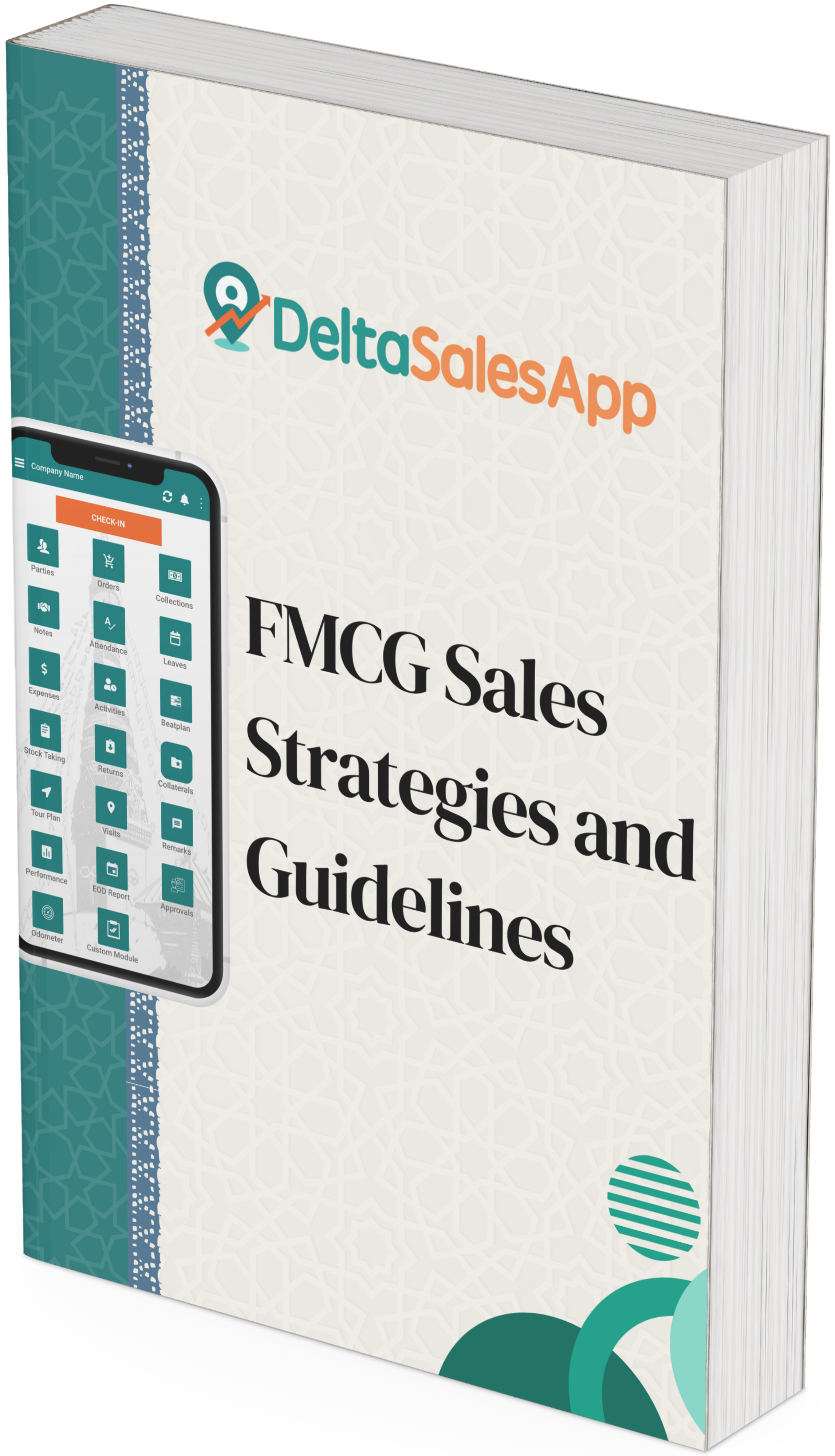Building a Resilient FMCG Distribution Network: Best Practices and Insights

The fast-moving consumer goods (FMCG) sector is evolving rapidly, and so are the challenges that come with it. As a key player in this industry, having a resilient FMCG distribution network is no longer just an option; it's essential for survival and success. With changing consumer preferences and technological advancements reshaping the landscape, companies must adapt their strategies to ensure efficient product delivery.
In today's competitive market, understanding how to navigate these complexities can set you apart from the rest. Whether you're a seasoned player or just starting out, building a robust distribution system will empower you to meet customer demands swiftly while maintaining profitability. Let's explore best practices and insights that will help strengthen your FMCG distribution network for future growth.
Building a Resilient FMCG Distribution Network: Best Practices and Insights
A resilient FMCG distribution network hinges on adaptability. Embracing technology is crucial, as it enhances visibility and streamlines processes. Investing in robust logistics software can provide real-time tracking, ensuring you stay ahead of potential disruptions.
Collaboration with retailers plays a significant role in this journey. Building strong relationships allows for better communication regarding inventory levels and consumer trends. When both parties work together, it creates a seamless flow from production to the shelf.
Diversifying your supplier base can mitigate risks associated with reliance on single sources. By having multiple suppliers, you reduce vulnerability during unforeseen events like natural disasters or economic shifts. This multi-layered approach fortifies your network against uncertainties while maintaining consistent product availability.
Introduction
The fast-moving consumer sector is evolving rapidly. As consumer preferences shift, building a resilient FMCG distribution network has become more critical than ever. Companies must adapt to changes in shopping behavior and technological advancements.
Effective distribution is key to staying competitive in this dynamic landscape. With retailers facing challenges such as fluctuating demand and supply chain disruptions, brands need robust strategies to ensure their products reach consumers efficiently.
A well-structured distribution network not only enhances visibility but also fosters partnerships with retailers. This synergy can lead to increased sales and greater market penetration, making it essential for businesses aiming for long-term success in the FMCG arena.
Understanding the Shift in Distribution Channels
The FMCG landscape is undergoing a significant transformation in distribution channels. Traditional retail models are being challenged by the rise of e-commerce and direct-to-consumer strategies. Consumers now prefer convenience, often opting for online purchases over physical store visits.
This shift necessitates that brands rethink their distribution approaches. Integrating technology into logistics has become essential to meet consumer expectations quickly and efficiently. Real-time inventory management systems can streamline operations and enhance responsiveness.
Moreover, social media platforms have emerged as critical touchpoints for reaching consumers directly. Brands must adapt their channel strategies to leverage these digital avenues effectively while maintaining strong relationships with traditional retailers. The ability to navigate this evolving ecosystem will be vital for success in the FMCG sector.
Factors Driving Retail Importance in FMCG
Retail plays a pivotal role in the fast-moving consumer goods (FMCG) sector. The landscape has evolved, with consumers increasingly prioritizing convenience and accessibility. This shift demands that brands adapt their strategies to meet these heightened expectations.
Consumer behavior also influences retail importance significantly. As shoppers become more informed and discerning, they seek out products that align with their values—sustainability, quality, and authenticity are at the forefront. Brands must ensure they not only cater to this demand but also communicate it effectively through various channels.
Additionally, technological advancements have transformed retail operations. E-commerce platforms and data analytics enable brands to reach consumers directly while optimizing inventory management. Such innovations help create stronger connections between FMCG companies and retailers, fostering partnerships built on shared goals of efficiency and customer satisfaction.
Strategies for Successful Entry into Retail
Entering the retail space requires a clear strategy. Start with thorough market research to identify potential gaps and opportunities. Understanding customer preferences is crucial for aligning your products with their needs.
Next, build strong relationships with retailers. This can involve offering attractive terms or unique promotional support that makes your brand stand out. A collaborative approach fosters trust and encourages retailers to prioritize your products on their shelves.
Consider leveraging technology for enhanced visibility in stores. Utilizing data analytics can help track performance and optimize inventory management effectively. Tailoring marketing efforts based on real-time insights ensures you stay ahead in the competitive FMCG distribution network landscape.
Key Considerations for Building a Resilient Distribution Network
Building a resilient FMCG distribution network requires an understanding of various key factors. First, evaluating logistical capabilities is crucial. This includes assessing transportation methods and warehousing efficiency to ensure products reach retailers promptly.
Next, establishing strong relationships with suppliers can enhance reliability. Consistent communication fosters collaboration, allowing for quick adjustments in supply when demand fluctuates unexpectedly.
Embracing technology plays a vital role in modern distribution strategies. Implementing data analytics helps businesses anticipate market trends and consumer preferences. By harnessing these insights, companies can adapt their networks effectively to meet evolving challenges while maintaining competitiveness in the FMCG landscape.
Enhancing Product Visibility and Accessibility
Enhancing product visibility is crucial in a competitive FMCG distribution network. Retailers often face crowded shelves, making it essential to stand out. Eye-catching packaging and strategic shelf placement can draw consumers' attention. Brands should collaborate with retailers for optimal display locations.
Accessibility goes hand in hand with visibility. Making products easy to find increases the likelihood of purchase. Ensure that inventory levels meet demand to prevent stockouts, which frustrate customers and lead them elsewhere.
Utilizing technology can also enhance accessibility. Digital tools like mobile apps or online platforms allow consumers to locate products quickly within stores or through e-commerce channels. This approach not only improves customer experience but also strengthens brand loyalty over time.
Crafting a Competitive Product Portfolio
A competitive product portfolio is essential for a resilient FMCG distribution network. It starts with understanding your target audience and their preferences. Conducting market research helps identify gaps in the market, allowing you to develop products that meet consumer needs.
Next, diversification is key. Offering a range of products can attract different customer segments. Consider variations in flavor, packaging size, or even eco-friendly options to appeal to sustainability-conscious shoppers.
Regular innovation keeps your portfolio fresh and relevant. Monitor industry trends and be willing to adapt quickly. Engaging with customers through feedback can guide new product development while ensuring alignment with what consumers truly desire.
Convincing Retailers of Consumer Demand
To persuade retailers of consumer demand, data is your best ally. Utilize market research and insights to present compelling evidence that showcases trends and preferences within your target audience. This helps create a strong case for carrying your products.
Engage in dialogue with retailers about their customer profiles. Understanding what drives their consumers will allow you to tailor your pitch accordingly. Sharing success stories or testimonials can further reinforce the potential interest in your offerings.
Providing samples can also be an effective strategy. When retailers see firsthand how well a product performs, it boosts their confidence in stocking it on their shelves. Building this trust not only enhances relationships but ensures mutual growth in the competitive FMCG landscape.
Ensuring Internal Capabilities Align with Retail Requirements
Aligning internal capabilities with retail requirements is crucial for a robust FMCG distribution network. Companies must evaluate their existing resources, systems, and processes to ensure they can effectively meet retailer expectations. A strong alignment boosts efficiency and fosters better relationships.
Investing in technology plays a significant role here. Efficient inventory management software and data analytics tools help streamline operations and provide insights into consumer behavior. These advancements enable brands to adapt quickly to market changes.
Moreover, training staff is essential for enhancing operational effectiveness. Team members must understand the intricacies of retail partnerships and know how to respond swiftly to challenges. This focus on skill development ensures that internal teams are well-prepared to support external demands from retailers.
Conclusion
Building a resilient FMCG distribution network is essential for navigating today's fast-paced market. As consumer preferences continue to evolve, businesses must adapt their strategies to maintain relevance and competitiveness.
Emphasizing effective communication with retailers can foster stronger partnerships. Aligning internal capabilities with retail demands ensures that products meet expectations while enhancing accessibility and visibility in stores.
By strategically crafting a diverse product portfolio and demonstrating clear consumer demand, brands can capture attention in the crowded marketplace. These efforts will not only bolster sales but also cultivate lasting relationships within the retail ecosystem.
The journey toward resilience requires ongoing assessment and adaptation of practices. By embracing these best practices, companies can strengthen their position in the ever-changing landscape of FMCG distribution networks.









